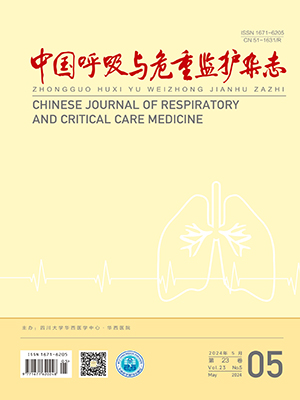Objective To investigate the diagnostic value and complications of fibrobronchoscopy and bronchoalveolar lavage in immunocompromised patients with pulmonary infiltrates. Methods Fiberoptic bronchoscopy was performed in 31 immunocompromised patients. The clinical data and results of bronchoalveolar lavage were collected. In addition to conventional microbiological methods, molecular detection for cytomegalovirus( CMV) and respiratory viruses were performed. Results In all cases BAL was performed. The overall diagnostic yield of fibrobronchoscopy was 65% . The diagnosis was more likely to be established by fibrobronchoscopy when the lung infiltrate was due to an infectious agent( 86%) than to a noninfectious process( 25% ) . By molecular detection, CMV was identified in 4 cases, and other respiratory viruses were identified in 3 cases. Fever ( 23% ) was the most common complication. Conclusions Fibrobronchoscopy and BAL are effective and safe for the diagnosis of pulmonary infiltrates in immunocompromised patients. The molecular technique may help to enhance the diagnostic yield of BAL.
Citation: ZHANG Pengyu,ZHANG Guoqing,XIE Guogang,JIN Xianqiao,ZHOU Xin.. Use of Fiberoptic Bronchoscopy and Bronchoalveolar Lavage in Immunocompromised Patients with Lung Infiltrates. Chinese Journal of Respiratory and Critical Care Medicine, 2009, 09(3): 259-261. doi: Copy
-
Previous Article
GRADE: Going from Evidence to Recommendations -
Next Article
An Introduction to Evidence-Based Medicine Glossary III




